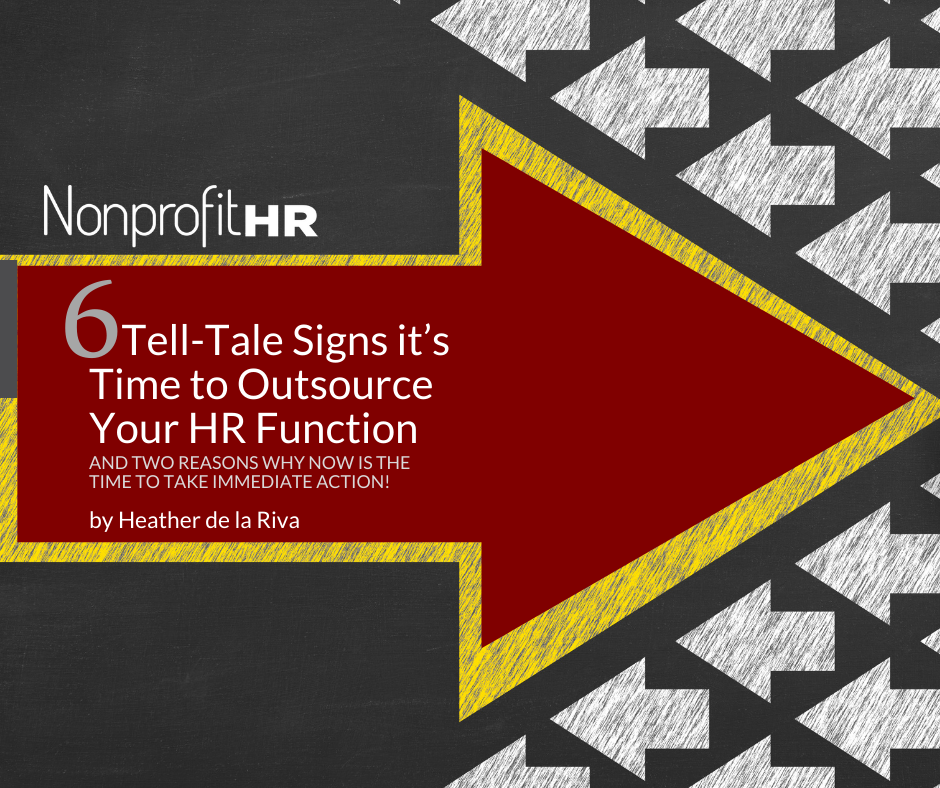WTOP: 5 ways nonprofits can…
In Nell Edington’s recent article “What is Nonprofit Sustainability?” she answers that important question this way:
“Nonprofit sustainability occurs when a nonprofit attracts and effectively uses enough and the right kinds of money necessary to achieve their long-term outcome goals.”
Being the passionate nonprofit talent advocate that I am, I’ve put my own “yes, and” spin on Nell’s well-crafted definition. To me,
“Nonprofit sustainability occurs when a nonprofit attracts and effectively uses enough and the right kinds of money and people necessary to lead and achieve their long-term outcome goals.”
Much like the varying perspectives on nonprofit sustainability that Nell explored in her piece, the sector is significantly divided and often “unfocused” on the importance and role of talent in nonprofit sector. But in reality, a nonprofit cannot achieve overall sustainability until it first achieves talent sustainability. It’s time we pay more attention to this often overlooked, yet crucially important factor in the sustainability equation.
The most impactful and sustainable nonprofit organizations are those that understand that organizational and talent sustainability are not either/or propositions but rather interdependent. They require intentional planning, integration and strategy. Leaders in these organizations understand that their ability to achieve their long-term goals requires clearly defined plans and actions related to the attraction, retention and development of talent from the C-suite to the front desk.
In some nonprofit circles, talent is seen merely as a means to an end. Organizations in this category take the approach that says “Thanks for coming to work here. We need you to work as hard as you can because, of course, we know you didn’t come here for the money. We may (or may not) remember to say thank you, and by the way, if you don’t like what we’re offering, it’s okay. We’re used to high turnover and will just hire someone to replace you if you leave after six months. We are a nonprofit, you know. We don’t have time think about HR stuff. That’s for big for-profits. We’re here for the mission.”
Then, there are those nonprofits that understand that talent is a different kind of asset—unlike furniture and equipment—and needs some measure of care and feeding, and maybe even development but they “just can’t afford it.” In these organizations, we see leaders with the best of intentions regarding their people, who just don’t see talent and culture as a priority. Unlike development or accounting or program management, they see a having structured people function as “a luxury.” These organizations are laser-focused on their missions and communities but see the HR or people management function as ancillary or a “nice to have.” Leadership doesn’t define any specific talent-related goals beyond perhaps, keeping turnover to a minimum. Staff are often left to themselves to understand how their work intersects with and impacts the work of their organization.
But organizations with leaders who understand the importance of talent to their mission and fully prioritize their people are the ones that thrive. Much like the importance of having a “diversified revenue stream,” to organizational sustainability, nonprofit leaders in this category also understand the vital importance of diversity, equity and inclusion (DEI) in their workforces to the achievement of their missions. They go beyond having nicely worded statements in their employee handbooks and in their lobbies. They view DEI as essential to their longterm programmatic, financial and people health. They purposely seek alignment between mission and values and are proactive in ensuring that their internal culture reflects what they espouse to and in the public.
Let’s go a step further. I’d like to suggest that having talent sustainability requires:
Knowing Your Long-Term People Outcome Goals
To be sustainable, a nonprofit must articulate the long-term outcomes that they are ultimately trying to accomplish and ensure that their approach to people management aligns with that. If your goal is to focus on building and sustaining a positive, engaged workforce, someone needs to own that, drive it forward and be held accountable for results. And, as Nell says, “you cannot hope to be sustainable if you can’t articulate why you exist and what you ultimately want to accomplish as a social change organization.” I’ll add, you also cannot have a sustainable organization without a clear plan for “who” is going to get the work done and what they need to do it.
Having a Strategy to Achieve Those Goals
I completely agree with Nell when she says that “you won’t achieve those outcomes (and be sustainable) if you don’t have a long-term strategy to get there.” Much like your organizational strategy, your talent strategy doesn’t have to be and really shouldn’t be set in stone. It should provide your organization with a clear path and set of milestones against which your “people progress” can be measured. How will you measure the quality of the talent that you hire? What systems, programs and resources do you need to have in place to ensure a positive and productive culture that supports appropriate levels of retention? What skills do you need to have within your workforce today, tomorrow and next year to ensure the work of your nonprofit is accomplished? These are just some of the components of a measurable, impactful talent strategy.
Effectively Using the Resources Needed to Attract, Develop & Retain Talent
Here again, Nell hits it on the head. It really isn’t enough to “simply plan for the future. You must then figure out what staff, board, volunteers, systems, technology, marketing and other resources you need to bring your strategy to fruition.” Missions don’t get achieved without people. It’s really that straightforward. If your organization has set out to make major social change like alleviating poverty in your community, saving the planet from environmental injustices or ensuring that the arts remain funded and a vital part of American culture, why would you not think about “who” is going to get that work done and how you are going to pay the best talent that your money can buy? To do that, you must be clear about the importance of talent, how you are going to pay them in a way that positions your organization competitively (at least among other nonprofits) and how you are going to invest in your talent’s development. These factors are essential to building a sustainable nonprofit talent plan.
Attracting the Right Kinds of People
Knowing how much you are willing to invest in talent is a great start but it’s not enough. You have to figure out the other side of the talent equation, which is how to attract the right people to the right roles at the right time. An effective talent management strategy attracts people that are the right fit for your organization. This doesn’t mean that they look like you, went to the same schools as you did or walk the same journey as you. It means finding people who understand your organization’s purpose, connect to it, want to commit their time and talent to it, have the skills and experience needed to “do the work” and can help you advance your mission forward in a way that serves the needs of your stakeholders.
But how?
So how can you meet these requirements for talent sustainability? It largely comes down to the way you structure your HR function and the priority you place on strategy.
To achieve true talent sustainability, every organization needs someone in a strategic HR role. Even if you already have someone fulfilling your tactical HR needs (like running payroll and organizing performance reviews), your organization needs a leader capable of building and executing on bigger picture HR strategies.
While you could hire a Chief Human Resources Officer (CHRO) or build out your HR department, studies show that outsourcing strategic HR responsibilities allows staff to spend more time on core business functions, creates operational efficiencies and drives better human resources measurement and performance. That’s why Nonprofit HR offers strategic HR consulting services on a part-time, outsourced basis through our HR Outsourcing practice. Our experienced consultants are available to serve as your organization’s CHRO or entire HR department for as few as one and as many as five days a week, and can work on-site alongside your staff. Their strategic guidance has transformed the HR function of hundreds of nonprofits from tactical and reactive to strategic and sustainable.
Nell is spot on: “Nonprofit sustainability should not be up to just nonprofit leaders to figure out.” I completely agree. Everyone who wants to create social change (the government, private funders, individual donors and social change leaders) must advocate for, support and invest more in talent sustainability across the sector. What will you do today to drive talent sustainability at your organization?





























